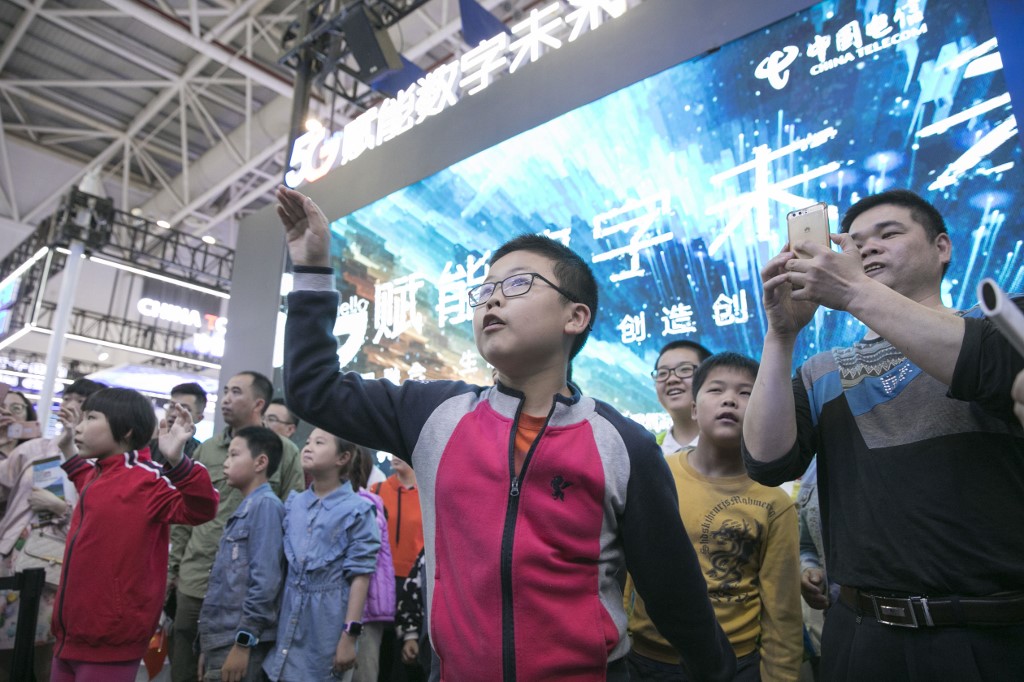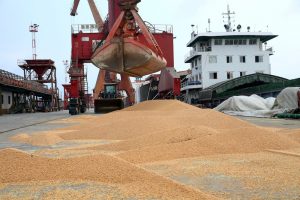(ATF) The 3rd Digital China Construction Summit has just concluded with the government and tech firms outlining plans for a ‘Digital China,’ which will be a main focus of the country’s development in the coming five years and beyond.
More than 8,000 people attended the summit in Fuzhou city with more than 200 companies exhibiting their latest digital technology and applications. Government and enterprises signed 426 digital economy projects, with a total investment of 331.6 billion yuan ($49.18 billion).
Fujian – ‘Digital Fujian’ – the province where the event was held, is opposite Taiwan, and was used as a showcase for other provinces.
Summing up conclusions on the summit, the Peoples’ Daily, the Communist Party’s leading mouthpiece, said that the coronavirus epidemic had highlighted the need and urgency for a digital transformation.
Many VIP guests attended and made positive comments.
Zhong Nanshan, an academic with the Chinese Academy of Engineering, who is a winner of the ‘Medal of the Republic’, said in a video speech that the application of big data and artificial intelligence had greatly improved the level of diagnosis, prediction and treatment of Covid-19 in China.
“At the beginning of the epidemic this year, we processed big data of more than 1,000 patients with Covid-19 across the country, [and] understanding the patient’s disease incubation period, clinical characteristics and other factors played an important reference role in the early diagnosis and differentiated diagnosis of the disease,” Zhong Nanshan said.
Liu Qingfeng, director of iFlyTek, HKUST, explained the role of artificial intelligence, saying: “During the epidemic prevention and control period, we used artificial intelligence technology to call each family [at risk]. The first 1 million families were completed in only six hours. This technology served 59 million people nationwide.”
Huawei’s rotating chairman Xu Zhijun praised the country’s efforts to speed up new infrastructure construction.
“In the short term, new infrastructure can stabilize the economy and growth; in the long run, new infrastructure can stimulate more new demands and create more new infrastructure. The business model releases more power and potential to promote economic upgrades, laying a solid foundation for the digital transformation of thousands of industries and the high-quality development of large, medium and small cities,” Xu Zhijun said.
Li Yanhong, chairman and CEO of Baidu – ‘China’s Google’ – said: “We believe that the new brand of China’s digital economy in the next 10 years should be called the smart economy, and all fields, industries, and directions must be intelligent.”
Xi Dan, senior vice president of Tencent, shared new changes in the digital economy on the consumer side, saying: “National online retail sales in the first half of this year increased by 7.3% year-on-year, and the digitalisation of the entire consumer side is still accelerating.”
That includes digital consumption “online shops”, which are not only a new trend, but also represented a new vitality. “Farmers in remote areas have begun to use the Internet to sell agricultural and sideline products, and small town shops are rapidly recovering with the help of digital platforms. During the just-concluded Golden Week holiday, total WeChat payment transactions in third-tier cities and below have increased by 50%,” Xi Dan said.
New digital ‘hotspots’
On the evening of October 11, ancient homes “met” with the future in the three lanes and seven alleys of the Ming and Qing ancient buildings in Fuzhou. Some 20 scholars from two academies gathered in ancient buildings with Fuzhou characteristics – the city has a special type of Hakka architecture – to discuss the direct of development and ‘hotspots’ of digital technology, and conceive the prospects of the digital economy and digital governance in the future.
“Dialogue with the future in ancient lanes” were part of the design of this Digital China Construction Summit, and innovative debate and settings like this were common.
The themed settings had new extensions. The sub-layers closely followed the development of the times and are more comprehensive – they not only set up traditional digital China sectors such as big data, Internet of Things, industrial Internet, and digital economy, but also added the latest “hotspots” of digital China such as blockchain, financial technology, and ‘smart’ manufacturing.
The participation of guests and audience showed new enthusiasm, the Peoples’ Daily reported. The total number of participants in the sub-forum exceeded 7,500, and 227 guests delivered speeches.
“Research and Judgment on the Trend of Digital Transformation of Global Social Governance (2020)”, was presented with typical cases of 10 top government applications and 10 top enterprise applications in the digital ecology.
There was also 50 examples of “Internet + healthcare”, plus other research results and case studies were released on site. The Southeast Digital Transformation Investment Fund and 15 key projects in the field of digital economy in Quanzhou chose to sign contracts at the sub-forum.
Preliminary statistics from the summit show a total of 426 digital economy projects with a total investment of 331.6 billion yuan were signed, and these covered cutting-edge fields such as artificial intelligence, 5G, industrial Internet, and blockchain, which will strongly promote digital industrialisation and industrial digitisation.
China’s new ‘smart life’
What is the future of digital life in China? The 3rd Digital China Construction Achievements Exhibition has been very popular since was launched.
As an important part of the summit, the exhibition covers an area of 56,000 square meters, bringing together 257 units and enterprises from China and abroad. The main focus was digital anti-epidemic technology, digital Fujian, guest provinces, digital government, digital economy, digital society. Overall, it gave a comprehensive display of the digital, networked, and intelligent development of China’s economic and social fields. More than half of the new technologies and new products were shown for the first time.
Sharing the digital dividend
One standout was a new garbage classification bin, which shows that now even rubbish can be digitised. Fujian Gongfeng IOT Technology Co Ltd displayed the new function of a garbage sorting bin – using facial recognition or QR codes, the bin will automatically open the lid, and the bin is weighed, before the recyclable rubbish is sorted and uploaded to a network system.
As an example of smart grid technologies, such as the Internet of Things and artificial intelligence, State Grid Fujian Electric Power’s service personnel can use a new power supply capacity visualisation platform to locate and install electricity at a customer’s address at high speed, relying on a big data “navigation map” to generate sufficient power supply with a one-click program.
Traditional industries get new tricks
Through the intelligent agricultural Internet of Things platform, tea production data is entered and collected throughout the process. Fujian is famous for its tea.
The main venue had full 5G coverage, as well as a number of smart app demos, such as digital payments, subway facial recognition, smart parking, and other apps which will likely be seen in common use in the future.
























